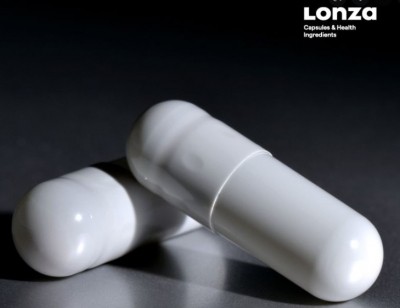Big opportunities in merging nutra and pharma

This was the key takeaway from an online event hosted by Vitafoods Insights last week entitled 'Exploring the Pharma/Nutra Intersection'.
Martin Oxley, managing director at Buzzback, gave an overview of the market in which he explained the consumer trends which are driving the nutra-pharma convergence.
He said to viewers of the webinar that the market for pharma and nutra products is estimated to be $722.6bn by 2026, up from $382.5bn this year (marketdataforecast, global nutraceuticals market), ultimately due to the fact the consumer is 'demanding wellness'.
“I think people are starting to see themselves as one entity where their body, mind and outer appearance are all interlinked. For example, we are learning a lot about the gut microbiome and its impact on mental health.”
He also presented viewers with the results of Buzzback's research looking at the impact of the pandemic on people’s outlook, involving 30,000 consumers in the UK and US.
The results show that one big picture effect of COVID is the increase in 'FUD factors' – fear, uncertainty and doubt. While these feelings are not positive, Oxley said there are also some opportunities that come from this consumer mindset.
“Something we are hearing from clients is that the pandemic is causing a crisis in trust," He said in the webinar. "We’ve seen widespread mistrust of institutions, leaders around the world, NGOs, businesses, governments are all struggling to break through to gain the attention [of consumers]."
He added that concerns around mental health, exercise and diet have also increased through the pandemic and this has lead consumers to be much more mindful of what's in the products they're consuming, whereas in the past they may have simply trusted the health claims made on pack.
Generation Alpha
He added that younger people, aka Generation Alpha (the first generation to be born entirely in the 21st century), are driving parents’ decisions.
Based on its consumer feedback, Buzzback has created a ‘purchase decision funnel’ indicating the purchase drivers/barriers that consumers go through when choosing a product. This funnel indicates that 'whether the child would like it' is the first thing the parent thinks about, followed by the health aspects of the product, followed by ingredients, followed by the child asking for it, and finally the brand.
So Oxley explained there’s been ‘a bit of a flip’ in terms of the brand power, but the brand is still an important consideration.
Another important purchase decision driver is social media, he said, which is shown to be the main source of information about products today, with 46% of consumers saying they get their information there, and Oxley pointed out this is a key influence in the rising FUD factor. This is compared to just 38% turning to friends and family, and 30% getting their knowledge from paid for media such as TV adverts.
“I think this category has a job to do to try and change that - get trusted information out there and make that stick.”
Two polarised categories
Kenn Israel, Founder of Innovation Nutrition Consulting, also joined the webinar to provide a presentation which further described the scope of the opportunity.
“We don’t have separate camps of dietary supplement consumers and OTC consumers," he explained to viewers, "we have consumers that are trying to feel better and maintain a better quality of life and these consumers stand to benefit from both markets.
“There was a long time in the dietary supplements world where companies were kind of offering alternative solutions to drugs and I don’t think this is our best space - I think our mandate is supporting wellness.
"On the other side of the proverbial aisle, OTC products want to get beyond problem solution with the consumer, they want to be part of their day-to-day welfare, and the consumer is demanding this too."
Explaining the key differences between the two markets, Israel said pharma has always been about disease treatment with products made from novel single molecules. The products take around a decade to bring to market due to seven years of clinical trials, with this process costing $1.3bn on average.
He added that the barriers to entry in this market means it is highly trusted and respected, despite current challenges.
“The challenges are that consumers are looking for wellness and not disease care. In fact, there are some consumers with the view point that pharma companies have invested interest in the maintenance of disease.
“The current spate about the safety of vaccines is another example of real, fundamental cracks in the foundation of trust in the pharmaceutical industry and this segways into government pressure.”
Whereas dietary supplements are there to support wellness and maintain health, with products made from nutrients, botanicals, minerals and food derivatives, he explained. Bringing a new product to market happens in 1-3 years with the cost of developing that product frequently less than $100k, and the product lifecycle is 'blazingly quick' from a CPG point of view, Israel added.
This lack of barriers to entry does also create some challenges.
“Challenges for this category are the low or no barriers to entry which makes it a bit ‘everybody come and play', which means you get a lot of amateurs in the market," Israel told viewers.
“There’s different and uneven regulation everywhere – nation to nation, state to state, country to country – coupled with poor enforcement and poor understanding of regulation by the players, causing chaos.
“The dietary supplements industry has a massive consumer trust issues. We are trusted less than most other industries and that’s something we’ve earned. It’s an uphill slog trying to get players to do the right thing.”
Good, clean, fun
Answering the question of how businesses from these two very different markets can work together, Israel explained it's all about "good clean fun".
Good
He explained the merging of the markets can lead to the creation of products that are actually better for you, made to the highest global standards in terms of purity, potency, safety, sustainability, equity and social justice.
Israel added: “For nutra, if we get this right it drives trust. For pharma, it will give them a diversity of offerings and new opportunities to consistently participate in making lives better.”
Clean
Consumers are demanding clean label foods and drugs, he explained. People want just the good stuff, none of the stuff they can’t pronounce, and no animal testing ad there are some validated models to allow for this. This is even impacting legislation - Titanium dioxide (E171) is now a banned additive in the EU. This is now the law of food products.
“There is a revolution already happening in the OTC category with companies like Zarbee’s. Beekeeper’s Natural, Genexa, and others creating clean label OTC products with no nasty additives or excipients and there are new players looking to enter the clean label OTC space, looking to completely dominate this world that’s been dominated by the market’s biggest players.”
Fun
According to Israel, consumers are getting bored with the same old products and this is leading the rise in interest in gummy supplements as well as a plethora of other formats including strips, shots, melts, lozenges, pastilles and solid emulsions.
“There’s a capsule shortage happening that makes these other delivery systems even more important. My word for formulating new products this year is ‘ABC’ – anything but capsules,” he told webinar viewers.
Innovations coming to market
Israel pointed out that the merging is very much already taking place and better products are already coming to market because of this. He told webinar viewers that in the last six decades more than 1400 drugs have been discovered from plant origins - over 100 current drugs are still derived directly from plants.
“There are now FDA regulated botanical drugs which present a completely different business model which is faster to market with lower development costs. All of a sudden plant-based drugs look really really attractive.”
Meanwhile, how nutra sources its next generation of actives is also changing. While the old model was solely underpinned by traditional use of the plants, the market then moved on to find the marker compounds within the plants and standardise these to identify active components. The next step was the identification of the mechanism of action and standardising to multiple constituents.
“Now players are using nutrigenomics, proteomics, metabolomics, and developing a more profound understanding of how plant extracts impact the totality of the subject."
There have already been several partnerships form between pharma and nutra, with big pharma companies like Pfizer, Bayer and GSK buying into nutra. And the traffic is not one-way, with nutra becoming more pharma with the likes of microbiome modulators, personalised nutrition for disease management and device guided nutraceutical use.
Israel said AI is the next step in bioprospecting and the search for IP. Traditionally nutraceutical developers have looked at just 2-3% of the compounds in the plant.
“This is where AI gets really interesting. If we map the molecules we can then bang these up against tens of thousands of protein interactions, enzymes, the microbiome, etc, and have startling implications.”
Editor’s Note: All information excerpted from the Vitafoods Insights webinar; the full recording of the webinar, including a panel discussion with Oxley, Israel and Russ Michaelson, is available for free at https://www.vitafoodsinsights.com/webinars/exploring-pharmanutra-intersection-webinar.















